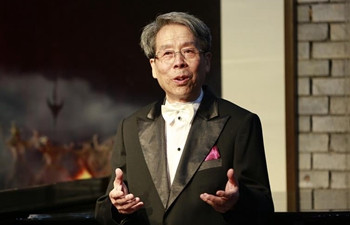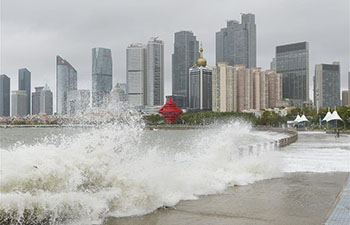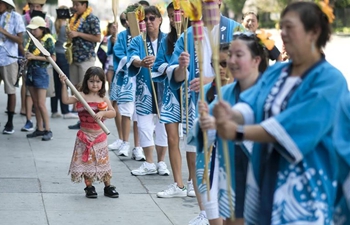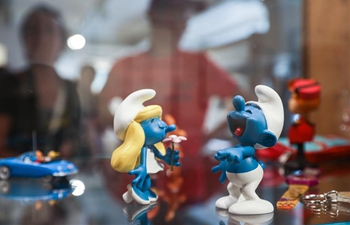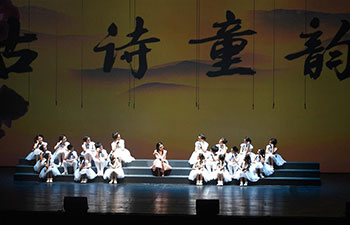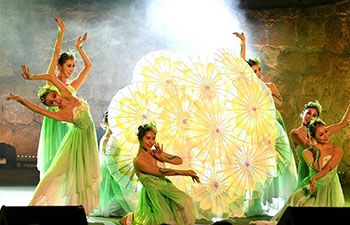by Evan Duggan
VANCOUVER, Aug. 14 (Xinhua) -- Lauren Hok straps on a backpack. It is attached to a small robotic head that looks over her right shoulder and two robotic arms, which pass a small ball from one hand to the other, and then to Hok's hands.
The robot is being controlled by Hok's friend Kayla Clancey, who sits nearby wearing a virtual reality headset.
Apparently, this is what team work will look like in the future.
The system Hok and Clancey are trying is called FUSION and it's being demonstrated this week at SIGGRAPH 2018 at the Vancouver Convention Centre.
Developed by researchers at KEIO University in Japan, FUSION combines the robotic backpack and a virtual reality headset so that two people can work together to handle an object or complete a task from two locations.
The guiding idea is called "telepresence collaboration," says MHD Yamen Saraiji, one of the lead researchers from KEIO University.
"A person who is a professional [at a given task] can guide a new person, and assist how he should work," he explains about the system. "Or, even two persons... can collaborate with each other and probably they can collectively gain a better outcome."
For instance, the technology could be used to share physical experiences with people suffering from loss of mobility with their bodies, or a program could manipulate the robot arms to teach the wearer how to play an instrument they've never touched before, Saraiji says.
"We are now interested more in the rehabilitative scenarios and how this can actually help people with physical disabilities," he says. "For example, what if a person had weak muscles and other person can help him to guide his body motion?"
Hok tells Xinhua she could definitely see someone with limited mobility in their hands benefiting from the robotic system. It could guide them to grab some stuff or even to be a helping hand in the kitchen.
FUSION is just one of many bright ideas here at SIGGRAPH 2018. The technology conference attracts more than 10,000 top technical and creative people from around the world to different host cities each year. This is its third time in Vancouver.
They come to showcase or learn about the best ideas and technologies in science, art, computers and animation.
The six-day conference, which continues here through Saturday, provides a glimpse of the future technologies that will shape how people work, play and live.
At another kiosk at the exhibition floor, researchers from South Korea are demonstrating the Wind-Blaster.
An older gentleman is wearing the system - a VR headset and a pair of propellers worn at the wrists - while playing a video game. The system sounds like a leaf-blower, but the man is moving about the space appearing to shooting some kind of weapon.
The propeller system can be used anywhere and can simulate experiences that are common in video games like firing a weapon or fighting with a sword, says Andrea Bianchi, one of the project's developers.
"It's wearable," he says. "It can go anywhere."
When it comes to technology and business, the gaming industry always seems to be at the cusp of the revolution when it comes to creating a more immersive experience, he says.
"In some ways there is a new revolution," he says. "I think from my point of view, being in a research facility, we want to push this bar of trying to apply different technologies coming from different fields like aerospace into things like gaming and virtual reality. This application of technology, I think, is the next big thing."

